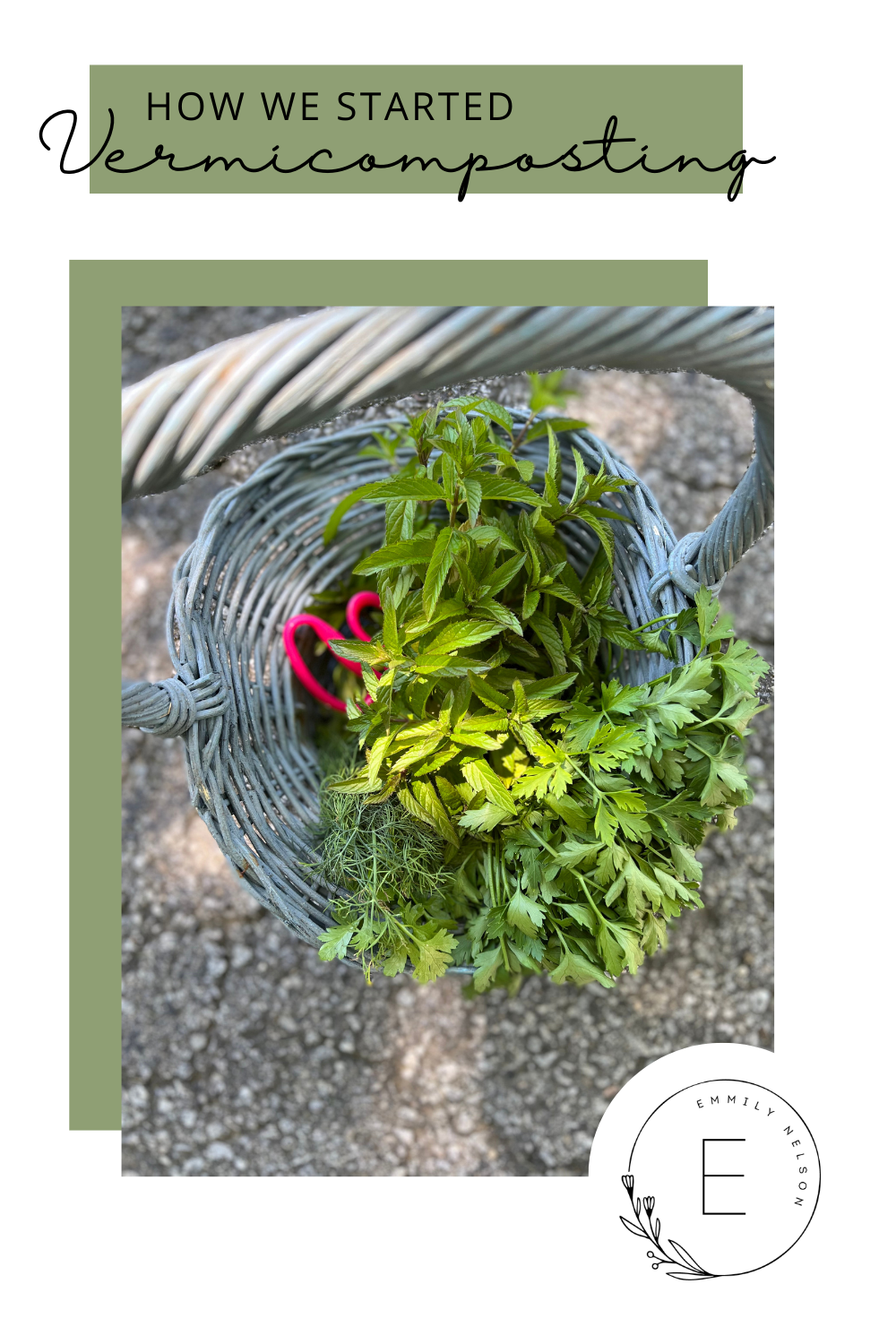What in the world is vermicomposting?
Every time I type the word I get an ugly red line under it. We know what composting is (the breaking down of food scraps and biodegradable products) so an extension of that is simply using worms in the process.
I’m sure you’ve seen the big vats people use to fill and turn their scraps, then they pull out this beautiful black product called compost. It’s rich in nutrients to help with gardening. Pretty neat, huh?

Well vermicomposting is the use of worms with your compost. Worms are essential to healthy soil. They eat scraps, breaking everything down, and their waste is compost. It’s so simple. They do all the work.
What system did we choose?
There are so many choices when it comes to using worms in your compost, but the system we researched and chose is the Subpod© system. This neat little composting box digs right into the ground and is filled with holes so worms can travel freely in and out. You can read more about the process here. Another neat thing about the Subpod© system is that they offer it for any living situation, to include apartment living. How neat!
One of my favorite things about choosing this method instead of throwing our compost in or on the ground is that is doesn’t smell. At all. The worms take care of the odors (as well as many other creepy crawly friends you’ll meet) which means composting is not only simple, it won’t attract flies.
Here’s where we have bought our worms for the past two years: Uncle Jim’s Worm Farm. Our size Subpod© needs 2000 worms to start. If you’re up for the challenge, you can certainly keep your worms warm all winter long and they won’t leave, but we decided it was easier to buy new worms each spring.
So what do we put in our Subpod©?

When you really think about it, you can compost most everything you would typically waste. Subpod© offers another article on some items you can compost.
Is it difficult?
Honestly, no. It did take me some troubleshooting my first year. I learned what my worms didn’t like, what would cause it to smell (not enough dry materials – highly recommend a coconut coir brick), how often to check it, and how often to aerate it. My first year, I felt like I didn’t quite get it right in order to collect compost and spread it to my garden, but my second year I didn’t have to think much on it and I’ve spread my compost over my tomato plants and berry bushes. It was the most amazing feeling to collect the compost knowing that was once scraps that would’ve ended up in a landfill. Instead, it gave back to my garden.


Where to put the Subpod©?
We chose to put our system right in our garden. I wasn’t sure if this would make a difference for our plants, but it seemed like a good place to dig it in. The plants growing next to our Subpod© are MASSIVE. They grew triple the size of seeds I planted at the same time in a different location in my garden. From trial and error this year, however, don’t put beans or peas next to the system. I’ve learned that those plants are finicky with nitrogen in the soil, so they’re best separate from the system. However, my dill plants thrived next to it, as did my tomato plants and parsley.
The takeaway here is that composting is quite simple, and vermicomposting makes it even easier. Instead of throwing things away, give them to the worms and create something new. Not only are you reducing your carbon footprint, but you’re giving back to yourself.

[…] we are big into composting, specifically vermicomposting, which I mention here, and soil health. These go hand-in-hand with using natural resources and using a no-till […]